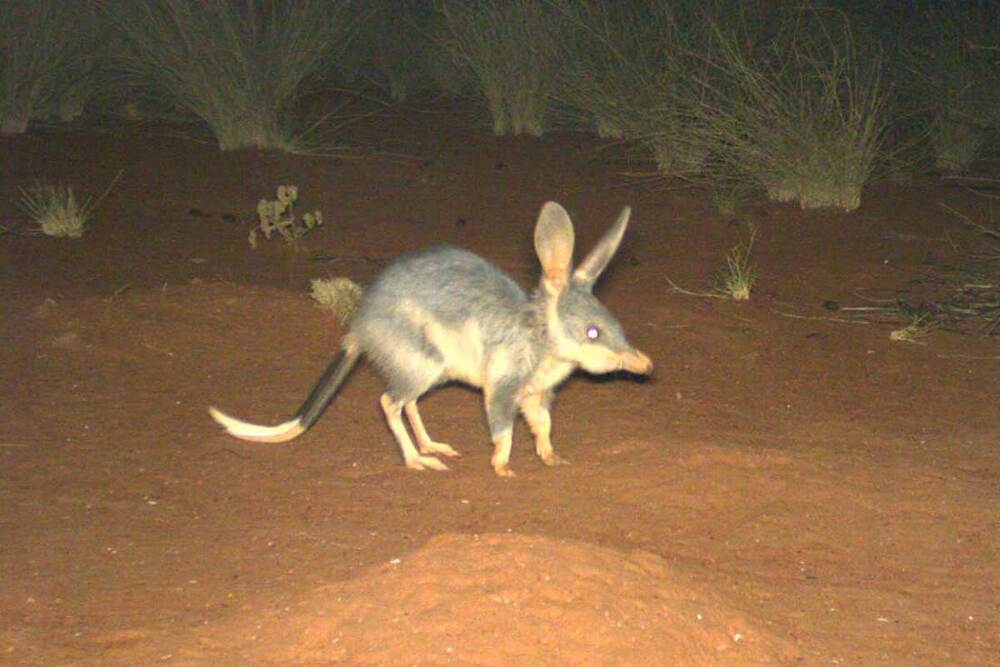Pilliga Bilbies burrowing blitz
Liz Cutts
03 April 2024, 6:40 AM
 A Taj Mahal of Bilby burrows. (image:T.Henderson)
A Taj Mahal of Bilby burrows. (image:T.Henderson)The Bilby, Australia’s answer to the Easter bunny, is reinvigorating the Pilliga Forest landscape with a digging frenzy.
The Australian Wildlife Conservancy (AWC), managers of the massive feral predator-free area established in the Pilliga Forest near Narrabri in 2018, say that a recent population census shows that the Bilby population is expanding in their established forest haven.
Following the reintroduction into the Pilliga Forest Conservation Area, the long-eared marsupials have dispersed throughout the fenced area, with ecologists witnessing a burrowing frenzy in the last twelve months. According to wildlife ecologist, Dr Tim Henderson, Bilby burrows are completely transforming the landscape.
“They are popping up everywhere, even on our access tracks which can make it a little difficult for us to get around but it’s great to see,” Dr Henderson said.
“All this burrowing is reinvigorating the landscape, and it’s not just Bilbies which benefit. We sometimes see multiple species using Bilby burrows, including Golden Bandicoots and Burrowing Bettongs.
“Bilbies will normally dig a single burrow, then Burrowing Bettongs will come in and renovate it into a multi-entrance complex. This level of earthworks is incredible.”
In the fourth year of the annual AWC Bilby Census, populations were surveyed at AWC’s Mt Gibson (WA), Newhaven (NT), Yookamurra (SA) and Scotia (NSW) wildlife sanctuaries as well as Pilliga State Conservation Area and Mallee Cliffs National Park where AWC works in partnership with NSW National Parks and Wildlife Service (NPWS).

PHOTO: Bilby caught on a motion-sensor camera. (image: AWC)
Since the 2023 census, the Bilby population at Newhaven has dramatically expanded throughout the fenced safe haven, while in the Pilliga Bilbies have dispersed from the smaller breeding area into the wider fenced area. At Yookamurra, Bilby numbers have doubled since the end of the drought in 2020.
The Bilby is an iconic Australian marsupial, instantly recognisable by its long-pointed snout, long ears, soft grey fur and striking black and white tail. The key to successfully reintroduce the regionally extinct Greater Bilby into the Pilliga has been the establishment of the massive fenced predator-free area.
“These prolific foragers and diggers play an important role as ecosystem engineers, turning over 20 tonnes of soil annually through burrowing and digging for food,” said Senior Wildlife Ecologist, Dr Vicki Stokes. “Their digging improves water infiltration and creates fertile microhabitats where plant seeds can germinate.
“The Bilbies with their engineering colleagues, the bettongs, have turned over a lot of soil in their search for food and when digging burrows. These activities will improve the ecosystem health of the Pilliga forest over time.”
During the recent Pilliga population survey, the team encountered several baby bilbies.
“Two of the female Bilbies had tiny baby Bilbies (called joeys) in their pouches,” added Dr Stokes. “We’ve also had increasing Bilby activity on motion-sensor cameras across the fenced area, indicating that the population is doing well.”
With Easter falling early in 2024, it coincided with the latest round of Bilby surveys underway at several sites throughout March .



